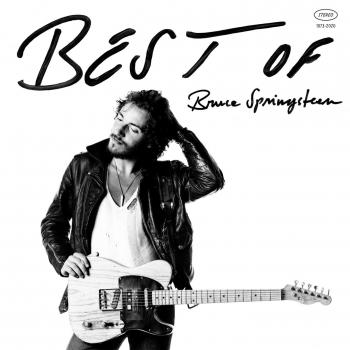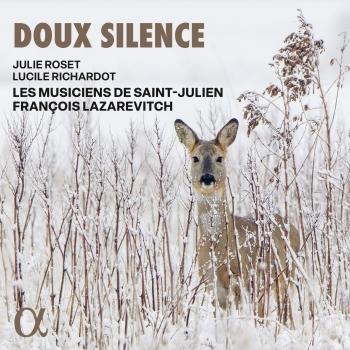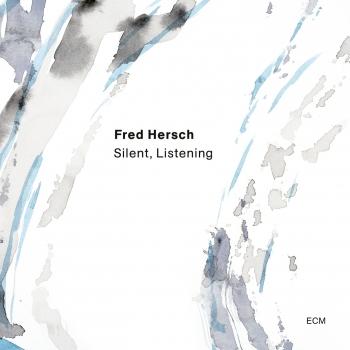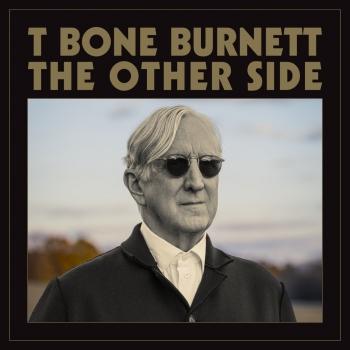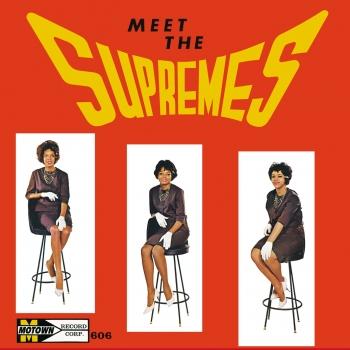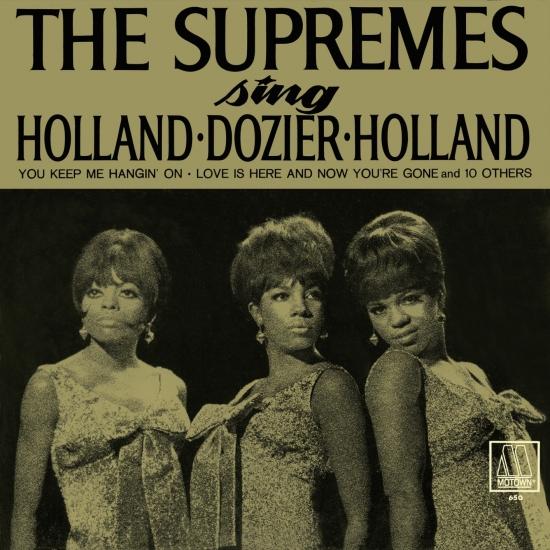
The Supremes Sing HollandDozierHolland (Remastered) The Supremes
Album Info
Album Veröffentlichung:
1967
HRA-Veröffentlichung:
21.07.2016
Das Album enthält Albumcover
Entschuldigen Sie bitte!
Sehr geehrter HIGHRESAUDIO Besucher,
leider kann das Album zurzeit aufgrund von Länder- und Lizenzbeschränkungen nicht gekauft werden oder uns liegt der offizielle Veröffentlichungstermin für Ihr Land noch nicht vor. Wir aktualisieren unsere Veröffentlichungstermine ein- bis zweimal die Woche. Bitte schauen Sie ab und zu mal wieder rein.
Wir empfehlen Ihnen das Album auf Ihre Merkliste zu setzen.
Wir bedanken uns für Ihr Verständnis und Ihre Geduld.
Ihr, HIGHRESAUDIO
- 1You Keep Me Hangin' On02:42
- 2You're Gone (But Always In My Heart)02:36
- 3Love Is Here And Now You're Gone02:48
- 4Mother You, Smother You02:36
- 5I Guess I'll Always Love You02:39
- 6I'll Turn To Stone02:24
- 7It's The Same Old Song02:33
- 8Going Down For The Third Time02:36
- 9Love Is In Our Hearts02:09
- 10Remove This Doubt02:53
- 11There's No Stopping Us Now02:59
- 12Love Is Like A Heat Wave02:38
Info zu The Supremes Sing HollandDozierHolland (Remastered)
The Supremes Sing Holland–Dozier–Holland (issued in Europe as The Supremes Sing Motown) is the tenth studio album released by The Supremes for Motown in 1967. It includes the number-one hit singles 'You Keep Me Hangin' On' and 'Love Is Here and Now You're Gone'. As the title states: all songs on the album were written and produced by Motown's main songwriting team of Holland–Dozier–Holland. Most of the album was recorded during the spring and summer of 1966; however several songs date back to the summer of 1964. According to Motown data this LP sold over 1,525,000 copies in the USA alone.
Included alongside these songs are a handful of other originals, including 'Remove This Doubt' and 'You're Gone, But Always in My Heart', among others. Also present on the album are covers of H-D-H penned songs for Motown artists The Isley Brothers ('I Guess I'll Always Love You'), The Four Tops ('It's the Same Old Song', 'I'll Turn to Stone'), and Martha and the Vandellas ('(Love Is Like a) Heat Wave')
„Brian Holland, Lamont Dozier, and Eddie Holland were one of the most successful songwriting and production teams of the '60s and '70s; they were staff songwriters at Motown Records who also worked with acts in the studio, and were the brains behind some of the label's biggest hits, including classics by the Temptations, the Four Tops, Marvin Gaye, the Miracles, and Martha & the Vandellas. Diana Ross & the Supremes were not only one of Motown's biggest acts of the '60s, they were personal favorites of label chief Berry Gordy, so it's no surprise that Holland-Dozier-Holland were often recruited to write and produce material for Motown's flagship act, and just as the title says, The Supremes Sing Holland-Dozier-Holland features the label's biggest female artists singing a dozen tunes written and produced by their best behind-the-scenes talent. However, this wasn't a 'best-of' collection, but a 1967 set dominated by fresh recordings, which means some of the Supremes' most popular recordings of H-D-H compositions don't make the cut, including 'Baby Love,' 'Stop! In the Name of Love,' 'Where Did Our Love Go,' and 'My World Is Empty Without You.' The album also features the Supremes putting their stamp on H-D-H tunes that were hits for the Four Tops ('It's the Same Old Song') and Martha & the Vandellas ('Love Is Like a Heat Wave'), and while there's nothing wrong with these recordings, they don't quite have the same fire as the originals (Ross' relatively cool approach was always part of her calling card). With a dozen great songs performed by a fine vocal group backed by an outstanding studio band, there's no way The Supremes Sing Holland-Dozier-Holland could not be a good album, but it isn't quite as great as it could have been, despite a handful of excellent tracks.“ (Mark Deming, AMG)
Diana Ross, lead vocals
Florence Ballard, background vocals
Mary Wilson, background vocals
The Andantes, background vocals
The Funk Brothers, instrumentation
Produced by Brian Holland, Lamont Dozier
Digitally remastered
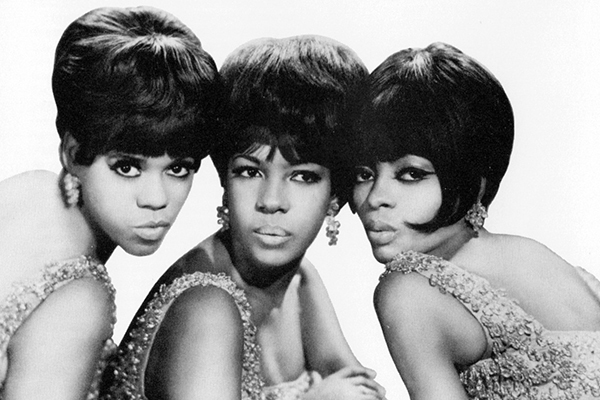 The Supremes
The Supremes
It was more than a record-setting chart sweep that began when “Where Did Our Love Go” made DIANA ROSS AND THE SUPREMES into household names in the summer of 1964. It was really a love affair — between three women and the world. Along with the charmed circle of Motown singers, writers, producers and players, they re-wrote the book on pop music in the Sixties and Seventies.
“Where Did Our Love Go,” written by Brian Holland, Lamont Dozier and Eddie Holland, established a sound and a group in one giant step, with Diana Ross’s bright, insinuating lead, and hypnotic repeating counterpoint from Mary Wilson and Florence Ballard. The Supremes left Detroit in early summer on a Dick Clark tour bus at the bottom of the bill, but with excitement mounting, they returned with their first No. 1 record of five in a row.
Within a year, Diana Ross and the Supremes notched up six No. 1 pop singles, and they would post another six pop chart-toppers by the end of the decade. But the fact of that accomplishment is only one facet of the group’s significance. The sound was so refreshing, the look so flawless, and the vibe so compelling that Diana Ross and the Supremes became no less than a defining reference point for America, for admiring musicians and fans worldwide, and for successive generations of female pop artists.
The Motown Sound was a powerful hybrid. Holland-Dozier-Holland and the legendary Motown rhythm players used blues, jazz, R&B, classical and pop devices to craft a run of Supremes hits that was danceable, melodic and diverse; funky and classy, all at once. When British pop-rock invaded the world and obsoleted most American teen acts, Motown’s mix of ghetto soul and pop polish rocketed Detroit’s talented artists onto center stage. The Supremes’ “Baby Love” was the only record by an American group to top the British charts in 1964. Motown’s ingenious new fusion was the new sound that no one could duplicate — and everybody in pop and R&B tried.
Every variation on the Supremes theme was recognizably theirs, yet fresh and individual. If “Baby Love,” the second Supremes No. 1, was crafted in a classic follow-up strategy, the sophisticated yet swinging “I Hear a Symphony” took the formula to the sparkling musical and emotional conclusion. In the other three No. 1’s of that magic first year, “Come See About Me,” “Stop! in the Name of Love,” and “Back in My Arms Again,” the piston-like four-four Motown beat evolved into a classic trademark sound. But each song’s fierce arsenal of hooks — in arrangement, story line, and even choreography — made each of them a real re-invention, and an unforgettable episode in a continuing love story.
With six No. 1 records in a little over a year, Diana Ross and the Supremes all but owned the word “baby” — and they put a unmistakable claim on the word “classic,” too. The dominance of the group in the pop arena reminded the entire world how much of popular culture was rooted in America’s black community. Their music was helping to redefine America as a multi-cultural society, in the eyes of the world, and in the nation’s own eyes. Motown’s hard work ethic, upward mobility and inclusive mentality exemplified the American dream for many. So pervasive was the Motown drive that founder Berry Gordy Jr. once issued a company memo directing that “We will release nothing less than Top Ten product on any artist. And because the Supremes’ world-wide acceptance is greater than the other artists, on them we will release only #1 records.”
This ambition has made the Motown system the avowed role model for every entrepreneur that followed in the music industry. It also made Diana Ross and the Supremes’ body of work an absolute amazement of riches: it’s hard, without the charts in front of you, to recall which were No. 1’s and which weren’t, since they all sound like No 1’s in retrospect. “My World is Empty Without You,” a moody introspection worthy of “Bernadette,” was followed up by the locomotive “Love is Like an Itching in My Heart,” all bluesy sentiment, with a Smokey-esque rhyme scheme. Put it on and see if that Supremes A Go Go album cover doesn’t materialize in your mind’s eye, with Diana whipping her hair back. Diana Ross and the Supremes’ hits turned out to be both timely and timeless: the rhythm and drama of “You Keep Me Hangin’ On” predicted disco’s hyperactivity, while “Reflections” and “Love Child” responded to shifting musical and social trends, but maintained the emotional immediacy of the first Supremes hits. They forged a Tin Pan Alley-like fusion in “You Can’t Hurry Love,” and more pop classicism of the purest sort followed, in “Someday We’ll Be Together.”
The visuals of Diana Ross and the Supremes were imprinted on America’s consciousness at the same time that their run of hits was mounting. The lush sound of “Love is Here and Now You’re Gone,” which kicked off 1967 at No. 1, was of a piece with the group’s runway glamor and uptown chic. The movie theme “The Happening” was another key chart-topper for a group that had led Motown off the Motortown Revue buses and onto the stages of Vegas and the New York supper clubs. Berry Gordy’s determination to groom and present Motown acts in every corner of the world, and in every entertainment medium, would lead Diana Ross and the Supremes to co-starring turns with legendary labelmates The Temptations in two top-rated television specials, Takin’ Care of Business and Get It Together on Broadway, and in a top 10 single, “I’m Gonna Make You Love Me.”
None of the music seemed to date itself, as Supremes songs were remade repeatedly while the originals continued to play on radio, in movies and TV. It proved this: the sound of young America spoke to the dreams of young America. The Supremes phenomenon is often documented with iconic images — wigs and lashes; homemade teenage dresses that transformed, Cinderella-like, into designer couture; three beautiful faces in repose or in the heat of performance; and that unforgettable Stop!, gesture, to name just a few. But the significance of this success story weren’t to be found in the freeze-famed past. The real ripple effects were to be seen in the world itself — in the cultural significance of putting three beautiful black women on The Ed Sullivan Show. (Classic Motown)
Dieses Album enthält kein Booklet

